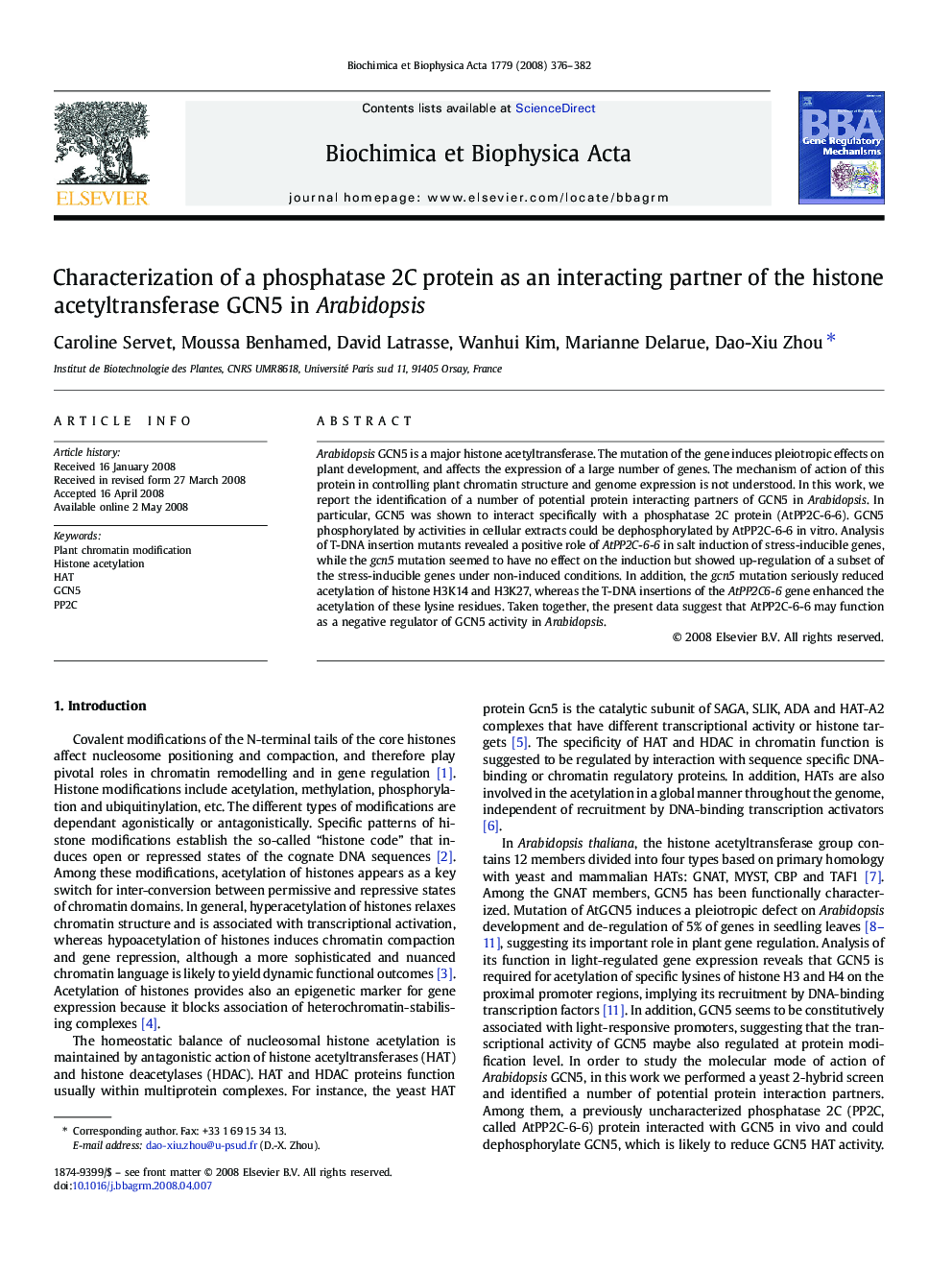| Article ID | Journal | Published Year | Pages | File Type |
|---|---|---|---|---|
| 1947076 | Biochimica et Biophysica Acta (BBA) - Gene Regulatory Mechanisms | 2008 | 7 Pages |
Arabidopsis GCN5 is a major histone acetyltransferase. The mutation of the gene induces pleiotropic effects on plant development, and affects the expression of a large number of genes. The mechanism of action of this protein in controlling plant chromatin structure and genome expression is not understood. In this work, we report the identification of a number of potential protein interacting partners of GCN5 in Arabidopsis. In particular, GCN5 was shown to interact specifically with a phosphatase 2C protein (AtPP2C-6-6). GCN5 phosphorylated by activities in cellular extracts could be dephosphorylated by AtPP2C-6-6 in vitro. Analysis of T-DNA insertion mutants revealed a positive role of AtPP2C-6-6 in salt induction of stress-inducible genes, while the gcn5 mutation seemed to have no effect on the induction but showed up-regulation of a subset of the stress-inducible genes under non-induced conditions. In addition, the gcn5 mutation seriously reduced acetylation of histone H3K14 and H3K27, whereas the T-DNA insertions of the AtPP2C6-6 gene enhanced the acetylation of these lysine residues. Taken together, the present data suggest that AtPP2C-6-6 may function as a negative regulator of GCN5 activity in Arabidopsis.
